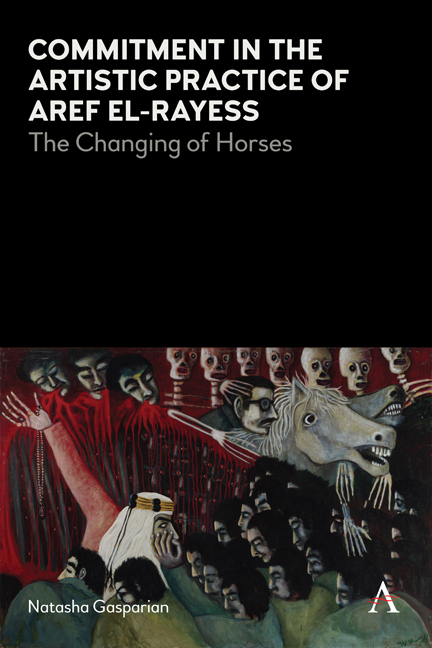Summary
Aref El-Rayess (1928–2005) is a notoriously difficult artist to write about. The art critics who followed the trials and tribulations of his practice throughout the years knew as much. Joseph Tarrab, for instance, characterized the artist in a pithy blurb in 1973 as:
The most mobile and versatile of our artists, one who rushes from one extreme to another without a break, as if he were looking for his own center of gravity which is always escaping him. He is constant only in his fidelity to change. He always seems to be running the risks of artistic adventure from scratch, denying his achievements to assert himself unceasingly as other than himself. It seems that a fundamental incredulity pushes him to always seek, through his works, a new approval of himself.
Tarrab's remark apprehends constant flux and transformation as central to El-Rayess's practice. Written after the turning point in the artist's career in 1967, this blurb intimates that Aref El-Rayess is impossible to pin down—to give a name. He deployed a gamut of styles, forms and ideologies, both synchronically and diachronically over the span of his career. Ideologically, he was neither strictly a nationalist nor a socialist; neither a mystic nor an atheist; neither an idealist nor a materialist. At various moments throughout his lifetime, his practice was delimited and superseded by all these characterizations. For instance, in 1964, he produced a monumental metal sculpture of a Phoenician soldier—an emblem of Christian nationalism—for the Lebanese pavilion at the World Fair in New York, as well as a tapestry whose subject matter was the Greek myth of the Phoenician prince, Cadmus. However, the specter of Phoenicianism in his work came and went like a flash, and his subsequent allegiance to the cause of Arab nationalism diminished with the Arab defeat of the 1967 June War.
Tarrab was correct in diagnosing the nonidentical character of El-Rayess’s practice—to put it plainly, that his work is not always recognizable as his—but the political and aesthetic shift signaled in his 1968 Dimaʾ wa Hurriyya (Blood and Freedom) exhibition, in which The 5th of June/The Changing of Horses (hereafter, The Changing of Horses) first appeared as its central painting, was determinate for his practice.
- Type
- Chapter
- Information
- Commitment in the Artistic Practice of Aref El-RayessThe Changing of Horses, pp. 1 - 6Publisher: Anthem PressPrint publication year: 2020



